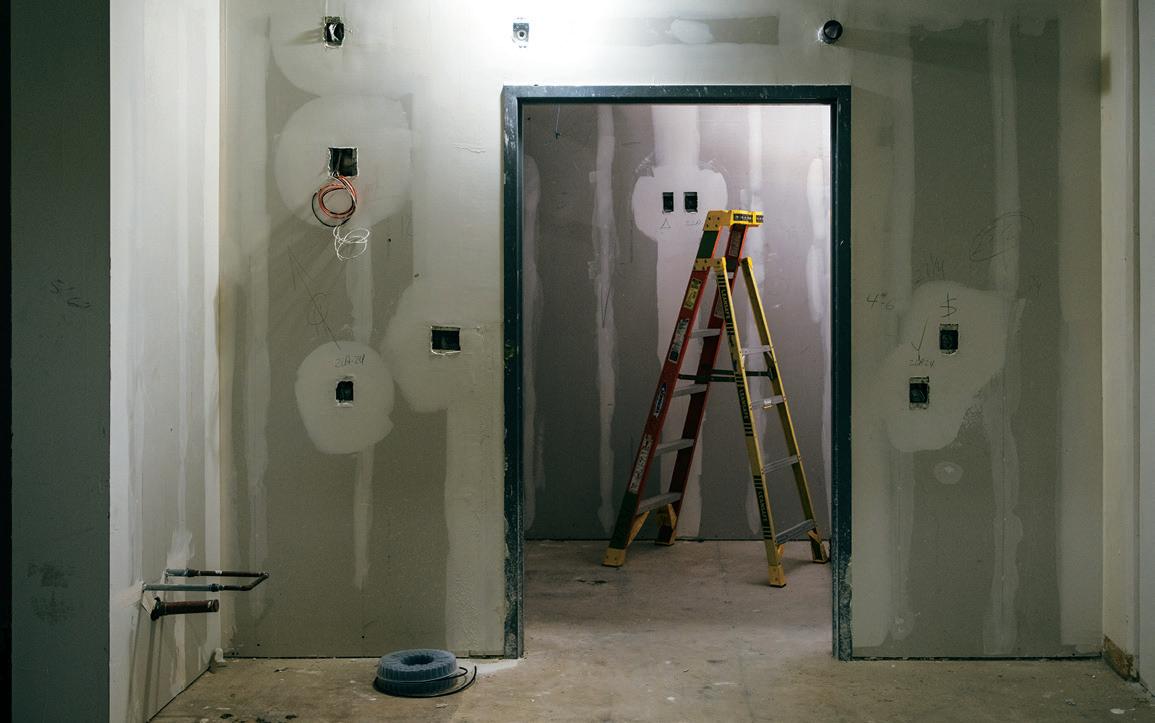
2 minute read
ASSEMBLING THE FUTURE
hange is in the air on the Texas Biomed campus. Three large construction projects consumed the Operations Team in 2018. Each of these improvements creates laboratory and animal space that allows for continued C growth of our scientific endeavors.
NEW BSL-3 LABORATORY
Advertisement
The new Biosafety Level-3 (BSL-3) laboratory opening Summer 2019 includes 7,500 square feet of space. Assistant Vice President for Operations, Matt Majors, describes it as “an exciting lab. This is the first of its kind for Texas Biomed, and there are very few labs like this in the country. We’re making major investments to improve efficiency, effectiveness, and customer service.”
BSL-3 laboratories are high containment spaces where scientists work on communicable diseases that are serious and transmittable, but treatable, like tuberculosis.
The facility will hold several new technologies Texas Biomed has not had before, like an aerosol biology room to mimic natural paths of infection with pathogens, a PET CT room, a necropsy suite, and a huge autoclave which sterilizes equipment and cages.
With so much space, the new BSL-3 will be able to house up to 80 nonhuman primates and 2,500 mice. The facility will also have amenities for the scientists including showers and a changing room.
“This state-of-the-art BSL-3 facility will provide Texas Biomed researchers and collaborators with a unique platform to test novel therapies and vaccines against deadly infectious diseases such as tuberculosis, explained Professor Jordi Torrelles, Ph.D., BSL-3 Director. “With capacity to hold 25 researchers working at once and a large and diverse number of animals (mice, marmosets, macaques, baboons), this facility will provide unique venues for contract studies and foster new collaborations within San Antonio and with the U.S. and global scientific community.”
NEW MARMOSET HOUSING
The James R. Dougherty, Jr., (JRD) Medical Research Laboratory has been converted into updated, expanded space for the Southwest National Primate Research Center’s colony of marmosets. These are small New World monkeys that serve as important animal models for aging and infectious disease studies.
The interior renovation of the JRD building is a $2.5 million investment. Much of the work is mechanical. At full capacity, this 12,000 square foot building can house up to 550 marmosets, and will start with 450 marmosets, making it the country’s largest captive colony of these monkeys dedicated to biomedical research.
“The construction and improvement of the JRD building will enhance the care and housing capacity for the marmosets, providing specialized barrier space to care for geriatric marmosets, and a new dedicated cage wash,” explained Associate Professor Corinna Ross, Ph.D., of the SNPRC. “These
Texas Biomed’s new BSL-3 is set to open summer 2019, providing scientists new state-of-the-art equipment and facilities.










